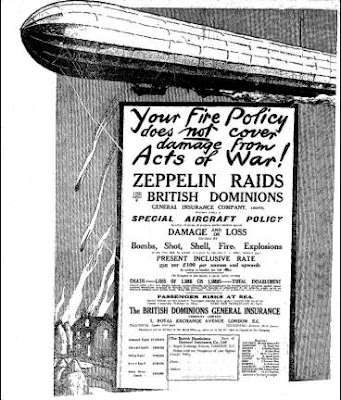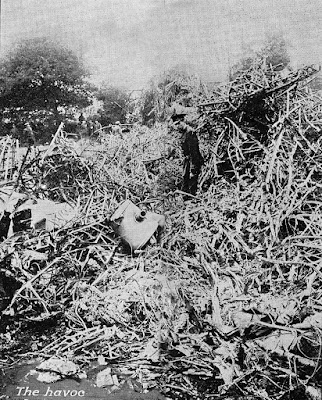 |
| Windsor Castle from the Thames River, GWW Photochrom print, Circa 1890-1900. Click on link above for more information on the Photochrom Process [From my own collection] |
During Queen Victoria's long reign she made use a number of royal residences, primarily Windsor Castle in Berkshire, Buckingham Palace in London, Osborne House on the Isle of Wight, Holyrood House in Edinburgh, and Balmoral Castle in the Scottish Highlands.
This series primarily features 'behind the scenes' pre1901 images from Queen Victoria's Private Apartments which will attempt to portray something of Her Majesty's secluded world away from the public gaze. Actual original extant photographs of Queen Victoria when resident at each Royal residence are also featured. The quality of all images varies considerably. My first blog in this series features images taken in the Private Apartments and Semi-State Apartments at Windsor Castle, having been designed by Wyattville for King George IV after his coronation in 1820.
"[King] George persuaded Parliament to vote him £300,000 for restoration (£245 million in 2008 terms). ... the architect Jeffry Wyattville was selected, and work commenced in 1824. Wyattville's own preference ran to Gothic architecture, but George, who had led the reintroduction of the French Rococo style to England at Carlton House, preferred a blend of periods and styles, and applied this taste to Windsor."
These views mainly follow a route from the Private Dining Room adjoining the State Apartments at the end of the North Terrace, then along the East Wing of the Upper Ward, and round to the George IV Gate in the South Wing. Not all the private apartments are pictured.
When King Edward VII ascended the throne in 1901 he immediately set about re-modernising Windsor Castle with "enthusiasm and zest". Many of the rooms in the Upper Ward were de-cluttered and redecorated for the first time in many years.
"peering into cabinets; ransacking drawers; clearing rooms formerly used by the Prince Consort and not touched since his death; dispatching case-loads of relics and ornaments to a special room in the Round Tower ... destroying statues and busts of John Brown... throwing out hundreds of 'rubbishy old coloured photographs' ... [and] rearranging pictures".
Admittedly many of the rooms were overladen with decoration and Victorian era clutter and benefitted from a general clean up. Queen Mary also left her mark on most of the Royal residences with one of her favourite past-times being "redecorating and re-arranging rooms" - much to the despair of her staff. As a connoisseur of the arts she did in fact take a keen interest in the Royal collection of furniture and art, both restoring and adding to it.
 |
| The Royal Library |
 |
| The Billiard Room, Taken 21 Nov 1893 |
The Billiard Room is rather inconveniently situated on the Ground Floor of the State Apartments facing the North Terrace and directly under the west end of the Throne Room in the State Apartments above. The billiard table itself is made from wood salvaged from HMS Royal George, which sank at Spithead in 1782 with the loss of 800 lives, being raised in 1841. It was at the time considered by some to be inappropriate and in bad taste to have a billiard table made of wood from the wreck. But despite the wood then being ordered to be used in a new Royal Chapel instead it appears that this directive was in the end inexplicably not carried out.
 |
| The Gothic Private Dining Room, 1848. A Chromolithograph by Joseph Nash |
The Gothic design Private Dining Room is located in the Prince of Wales's Tower at the North East end of the State Apartments and is the work of A.C. Pugin and his son Augustus Welby Pugin.
 |
| The Private Chapel, 1848 A Chromolithograph by Joseph Nash |
Queen Victoria preferred short and simple religious services and despite being Head of the Church of England she personally considered herself more aligned with the Presbyterian Church of Scotland than the Episcopalian [Anglican] Church of England. She also supported the 'Protestant intentions' of the Public Worship Bill of 1874 which had the intent of purging the Church of England of High Church practices which made its liturgies resemble those of the Roman Catholic Church. Her decision to worship at Crathie Kirk near Balmoral Castle initially caused a scandal, particularly when it was discovered that she had taken Communion there in November 1873. Victoria strongly asserted that as Queen of Scotland, she was also entitled to worship in a Scottish [Presbyterian] church, and furthermore, Crathie Kirk was the closest church to Balmoral Castle.
 |
| The Crimson Drawing Room looking south, 1848 |
 |
| The Green Drawing Room looking north, circa 1900 |
Next lies the Green Drawing Room with interconnecting doors through to the Crimson Drawing Room on the North side and the smaller White Drawing Room on the South side. All are semi-state rooms. The Green Drawing Room had originally been built as a library with low bookcases around the walls, being converted to a formal Drawing Room at some time during the mid 19th century. The walls are hung with green damask with gilding on the decorative plasterwork.
In early years, both Queen Victoria and Prince Albert took breakfast, and sometimes luncheon, in the White Drawing Room. In later years the Oak Room was used for this purpose, especially after the death of Prince Albert in 1861
 |
| The Grand Corridor looking south. Note the row of statues on plinths. |
The Grand Corridor connects the Private and Guest Apartments which lie in the East and South Wings of the Castle. The Grand Corridor had never existed prior to Wyattville's rebuilding of the Castle from the late 1820's.
 |
| The East Wing of Windsor Castle and showing the formal East Terrace Garden. A Photochrome image, circa 1890's |
The Private Dining Room lies in the Prince of Wales's Tower at far right, then (moving left), the Crimson Drawing Room (two small and one large window in the middle), The Green Drawing Room (two small and one medium sized window in the middle) in the smaller Chester Tower, the White Drawing Room (one medium sized window), then the Prince Consort's apartment's through to Queen Victoria's apartments which lie from the King's [Victoria] Tower at far left, leading along the South Wing . The decorated Private Apartments, featuring a "distinctive gilt and gorgeousness style", were the work of the Decorators "Morel and Seddon". King George IV moved into these apartments in December 1828, even before other State Rooms within the Castle were finished.
 |
| The Last Moments of Prince Albert, The Prince Consort, as depicted in the Blue Room, 1861 |
Prince Albert's rooms were located from the south wall of The White Drawing Room through to the King's (Victoria) Tower at the South East corner of the Castle.
The Blue Room itself adjoined the White Drawing Room, the walls being hung with blue damask with matching curtains. On the express orders of Queen Victoria the room was to remain as it was when Prince Albert died here in 1861. Fresh flowers, clothes and hot water continued to be carefully laid out each day and the sheets changed. In the latter years of the 19th century the curtaining had became faded, frayed and rotten and desperately needed to be replaced. It was 'fearfully' replaced with new silk faded down to the original. This fact was carefully kept from Queen Victoria who thankfully never noticed the change due to her increasingly bad eyesight. After the accession to the throne of Kind Edward VII he had this room totally redecorated to serve as his Study (it serves this purpose today).
 |
| The Blue Room after the death of Prince Albert. |
 |
| The Blue Room, from a watercolour, 1865 |
The ceiling was painted with angels and stars after Prince Albert's death but otherwise everything remained as it had been in his lifetime.
 |
| Prince Albert's Bedroom - The Blue Room, circa 1880's -1890's |
 |
| Prince Albert's Sitting Room (later the Queen's Closet), 1861 |
 |
| The Queen's Closet (previously Prince Albert's Sitting Room) |
 |
| Queen Victoria's Bedroom |
It is recorded that Queen Victoria and Prince Albert shared a bedroom at Windsor Castle until his last illness where he died in The Blue Room shown above. Queen Victoria's Bedroom, Sitting Room and Boudoir (Dressing Room) were all located within The King's [Victoria] Tower in the South East corner of the castle.
 |
| Queen Victoria at her desk. Taken at Windsor Castle, 1891 |
 |
| Queen Victoria's Dressing Room, 1850's |
 |
| Queen Victoria's Dressing Room, 1850's |
This is the same image as shown above but is reversed. As to which image is the correct way round is unknown. The bottom image however is less distinct and may have been photographed from the original then the glass plate negative inadvertently reversed when the printing block was created.
 |
| Queen Victoria's Private Sitting Room by Joseph Nash, as shown in the mid 19th Century |
 |
| The Queen's Sitting Room, 1868 [Source : The Royal Collection] |
 |
| Queen Victoria's Private Sitting Room, 1890's |
 |
| Queen Victoria's Private Sitting Room. Queen Victoria knits while Princess Beatrice reads to her. Photographed by Mary Steen in 1895. |
Queen Victoria's Sitting Room lay within the King's Tower at the South East corner of the Castle with the main window facing south with a view of Windsor Great Park and The Long Walk. Directly above her were the Royal nurseries. By the end of the 19th century her Private Sitting Room had become full of ornaments, photographs and mementoes, "the orderly confusion of beautiful bric-a-brac".
 |
| The Angle of the Grand Corridor, 1846 |
This view shows the angle in the Grand Corridor and is shown looking north. Access to the Oak Room shown below is at some point around the corner on the left.
 |
| The Queen's Private Audience Chamber, 1867 [Source : The Royal Collection] |
 |
| The Queen's Private Audience Chamber, taken 1890s |
In this room in the South Range, close to her own apartments, Queen Victoria "gave audience to her Prime Ministers and other public figures". On the walls can be seen the portraits of the family of H.M. King George III painted by Thomas Gainsborough.
 |
| A Christmas display and tree set up in a room in the South Wing |
 |
| Another Christmas display, as painted by James Roberts, 1850 |
 |
| A lithograph of Queen Victoria distributing Egyptian War Medals to Officers and Men of the Expeditionary Force, 21st Nov 1882 |
 |
| A guest room in the South Wing overlooking The Long Walk. |
 |
| The Coffee Room above the George IV Gate |
 |
| A Lithograph of a Garden Party in the grounds of Windsor Castle, 1870 |
Bibliography :
- "Life of Queen Victoria", T Nelson & Sons, London, 1897 (from my personal collection).
- Wikipedia
- Various written and Internet sources.
- Various written and Internet sources.
- Images are only from my own personal collection where specifically indicated. These may be freely copied for non-commercial use providing a link is given back to this page.
- All other images have been "collected" over the last couple of years and I have not always recorded the source. Most appear to be in the public domain or are only low resolution 'preview' images however if copyright has been infringed please advise me so that I can remove them or provide a link.


























